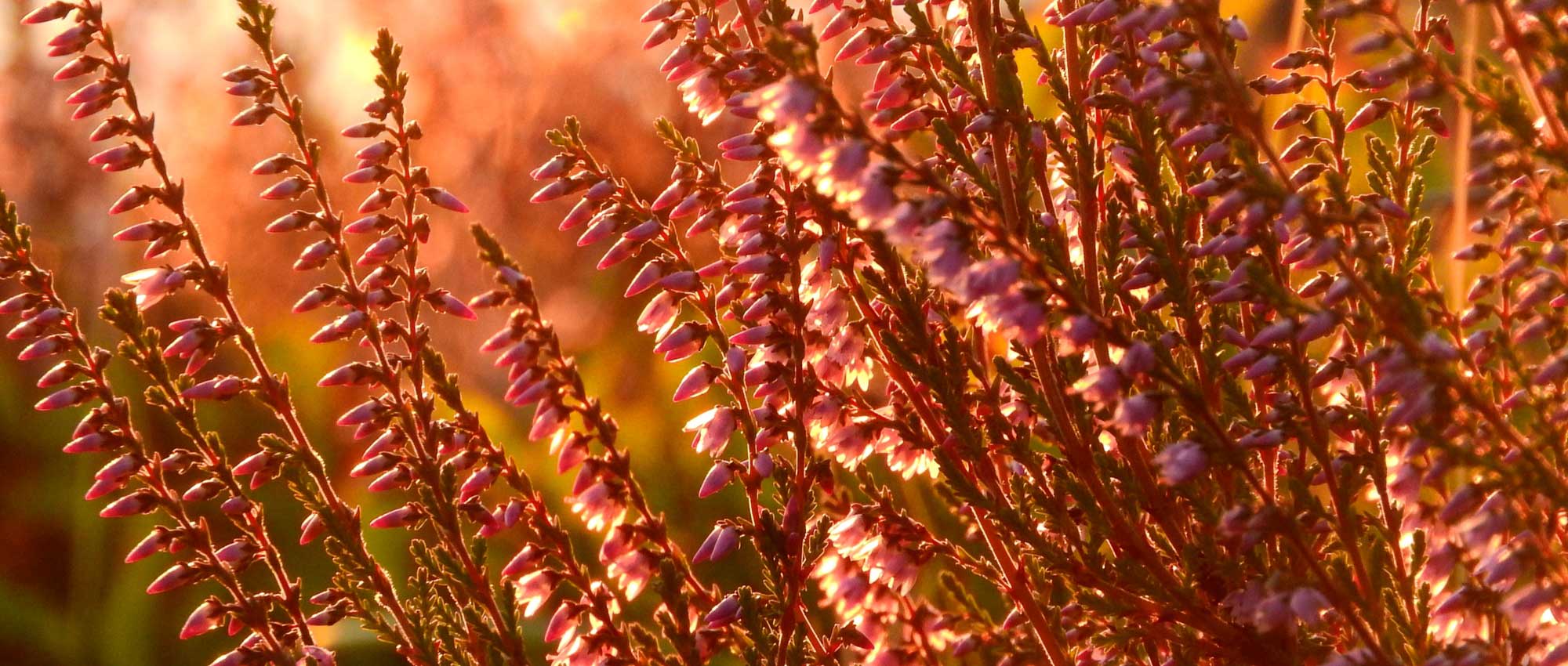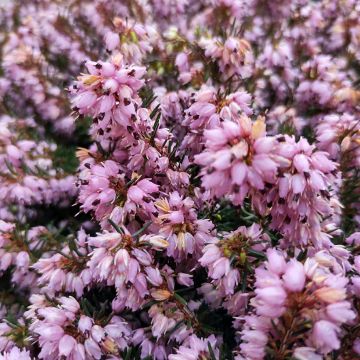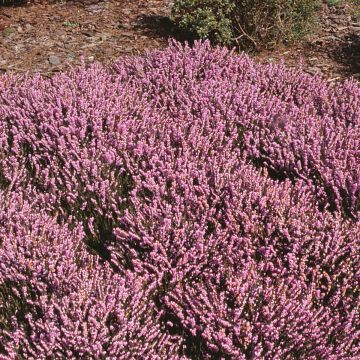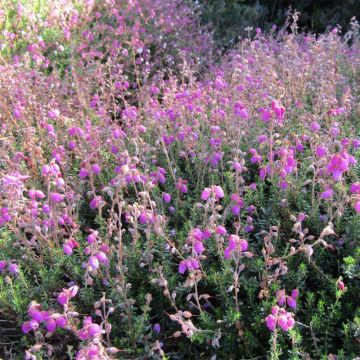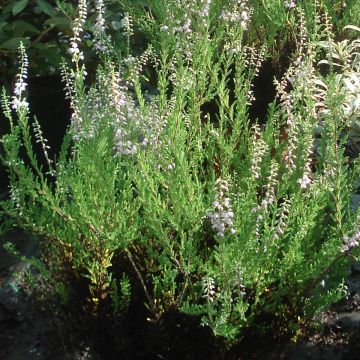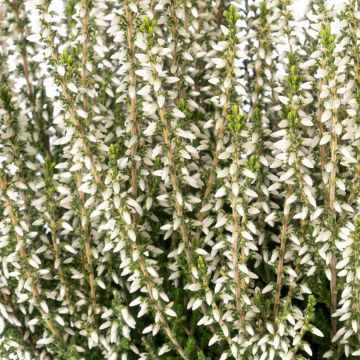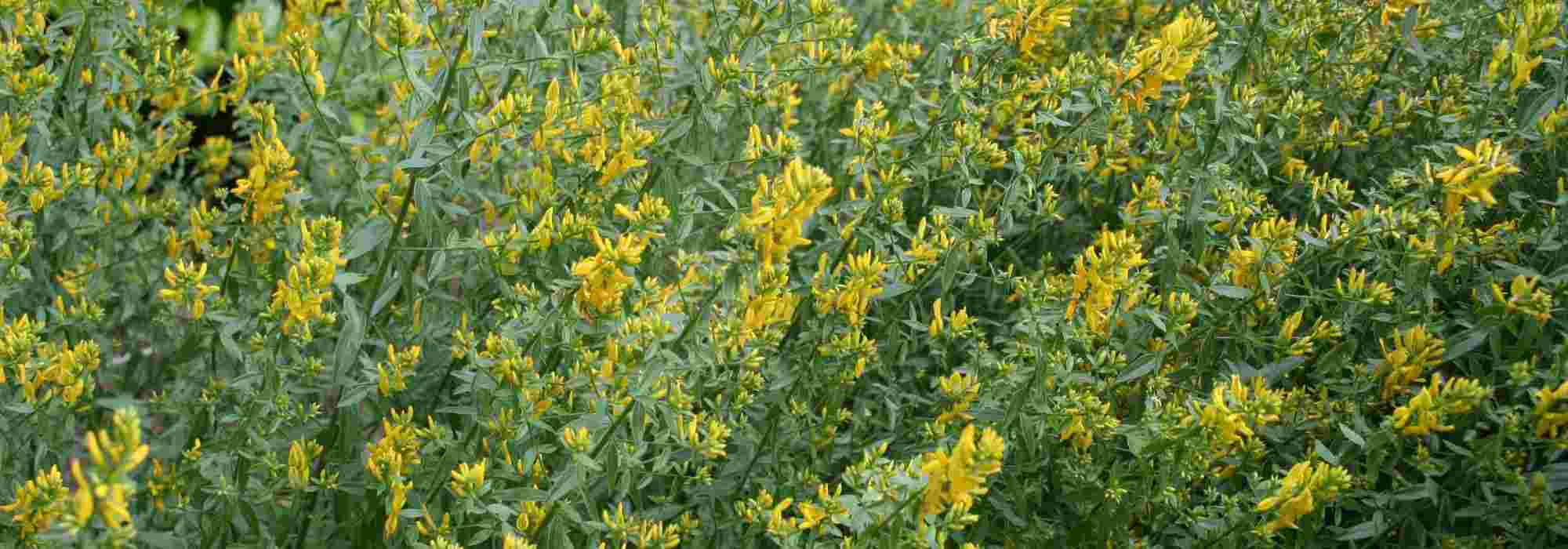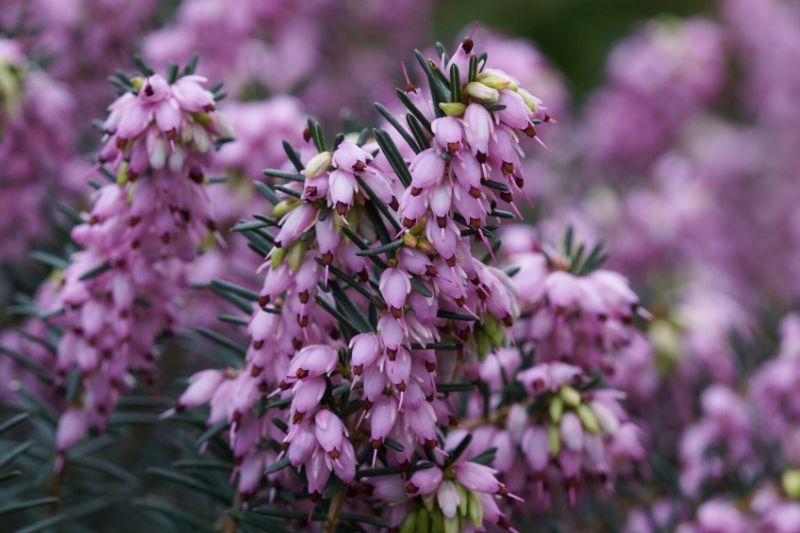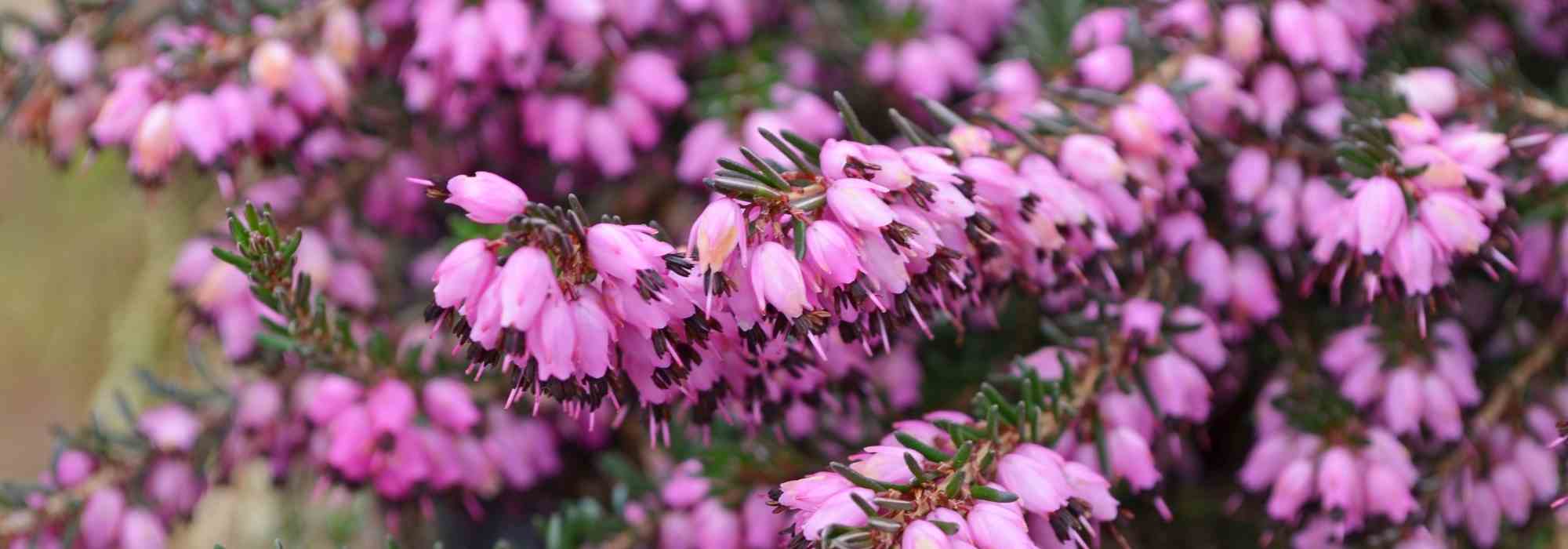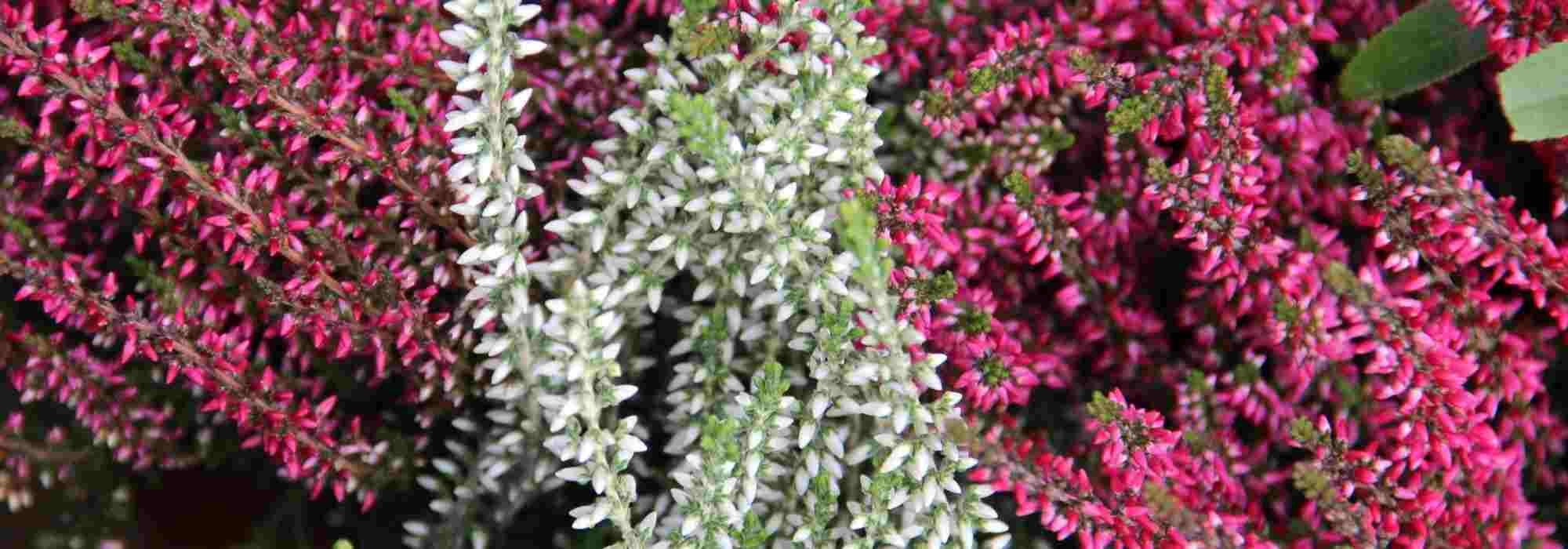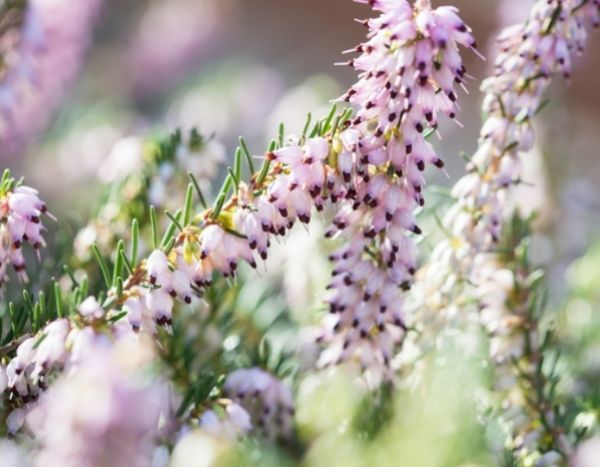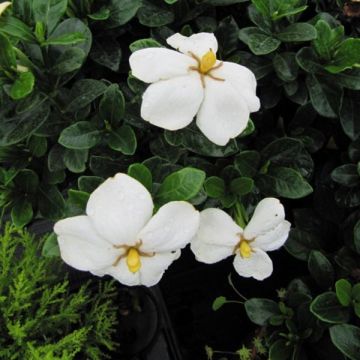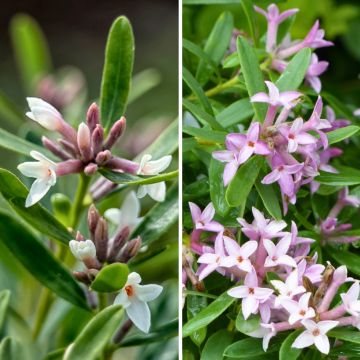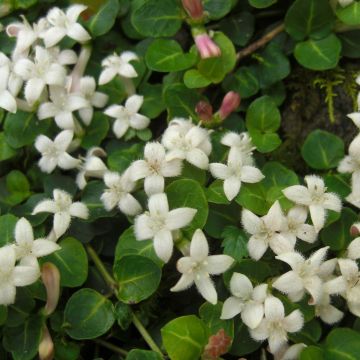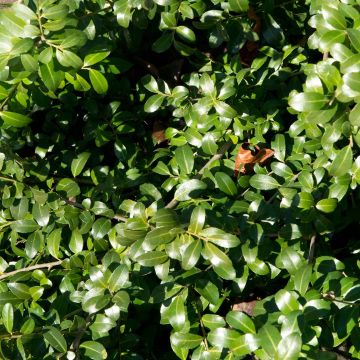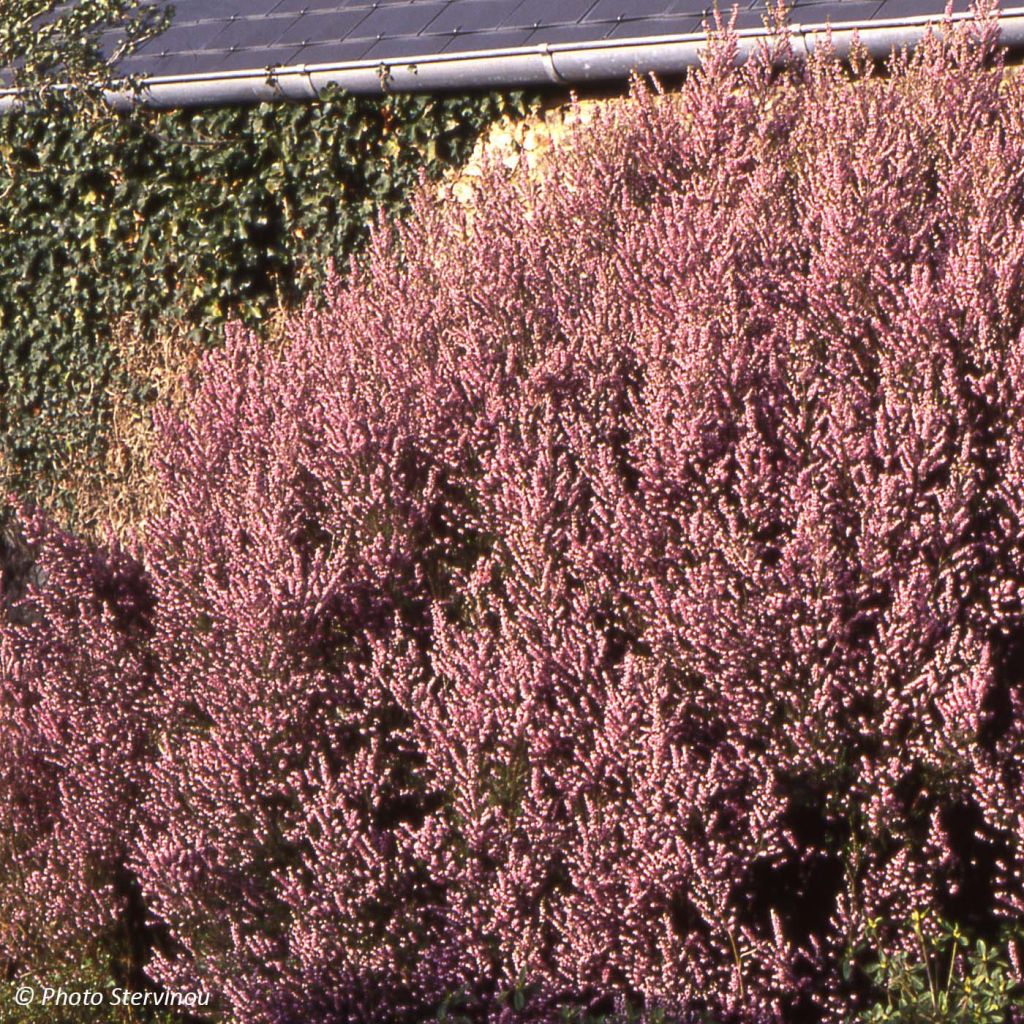

Erica mediterranea - Irish Heath
Erica mediterranea - Irish Heath
Erica mediterranea
Irish heath
Well packaged and arrived in perfect condition.
Jérôme, 26/09/2021
Special offer!
Receive a €20 voucher for any order over €90 (excluding delivery costs, credit notes, and plastic-free options)!
1- Add your favorite plants to your cart.
2- Once you have reached €90, confirm your order (you can even choose the delivery date!).
3- As soon as your order is shipped, you will receive an email containing your voucher code, valid for 3 months (90 days).
Your voucher is unique and can only be used once, for any order with a minimum value of €20, excluding delivery costs.
Can be combined with other current offers, non-divisible and non-refundable.
Home or relay delivery (depending on size and destination)
Schedule delivery date,
and select date in basket
This plant carries a 24 months recovery warranty
More information
We guarantee the quality of our plants for a full growing cycle, and will replace at our expense any plant that fails to recover under normal climatic and planting conditions.

Would this plant suit my garden?
Set up your Plantfit profile →
Description
Erica mediterranea, now renamed Erica erigena, is tall and very bushy. It offers an abundant and long flowering in pink-lilac in spring, but sometimes as early as January in very mild climates. The flowers are fragrant and honey-bearing. This heather tolerates limestone without appreciating it, and is very resistant to drought once established. It can also tolerate brief frosts of around -12° C (10.4° F). Plant it in isolation or in groups of 3 specimens in a wild or romantic garden: this is how it will be the most beautiful!
Erica mediterranea, also called Mediterranean heather, belongs, like all heathers, to the Ericaceae family. It is native to the Mediterranean region, Portugal, Spain, the Moroccan Atlas, southwest France (Gironde), but also northwest Italy and western Ireland. It is a relatively hardy shrub, perfectly adapted to seaside and dry, well-drained, acidic, neutral or even slightly limestone soils. This beautiful evergreen shrub, with a flexible and very bushy habit, is rather slow-growing and generally does not exceed 1.5 m (4.9 ft) in all directions. Its lifespan is about 15 years at a minimum. The branches are thin, brittle, and adorned with tiny olive-green leaves in the form of needles. Flowering begins from January to March, earlier or later depending on the climate, and lasts almost 2 months. The flowers resemble small urns, about 3 mm to 4 mm (0.1 in to 0.2 in) long and 2 mm (0.1 in) wide, with small brown stamens protruding. Their colour is a soft heather pink, slightly mauve, and they are so numerous on the shrub that they transform it into a colourful cloud. These flowers are gathered in beautiful long clusters scattered along the branches, in the middle of the evergreen foliage that persists throughout the year.
Water-efficient, not demanding on soil type, tolerant to salt spray, and endowed with the charm of wild plants, it is an ideal shrub for landscaping dry gardens or seaside areas. This large heather can be planted with shorter species and varieties that bloom at the same time in various colours: Erica carnea or darleyensis offer blooms ranging from pure white to purple-violet, as well as all shades of pink and red in winter and spring. It can also be paired with shrubby veronicas (Hebe), small-sized Pittosporum (Pittosporum tenuifolium 'Tom Thumb'), Viburnum fragrans, dwarf hollies, or even Chimonanthus praecox. In a naturalistic garden, this heather can form, in a group of 3 to 5 specimens, an extremely romantic setting at a time when flowering is rare.
Erica mediterranea - Irish Heath in pictures
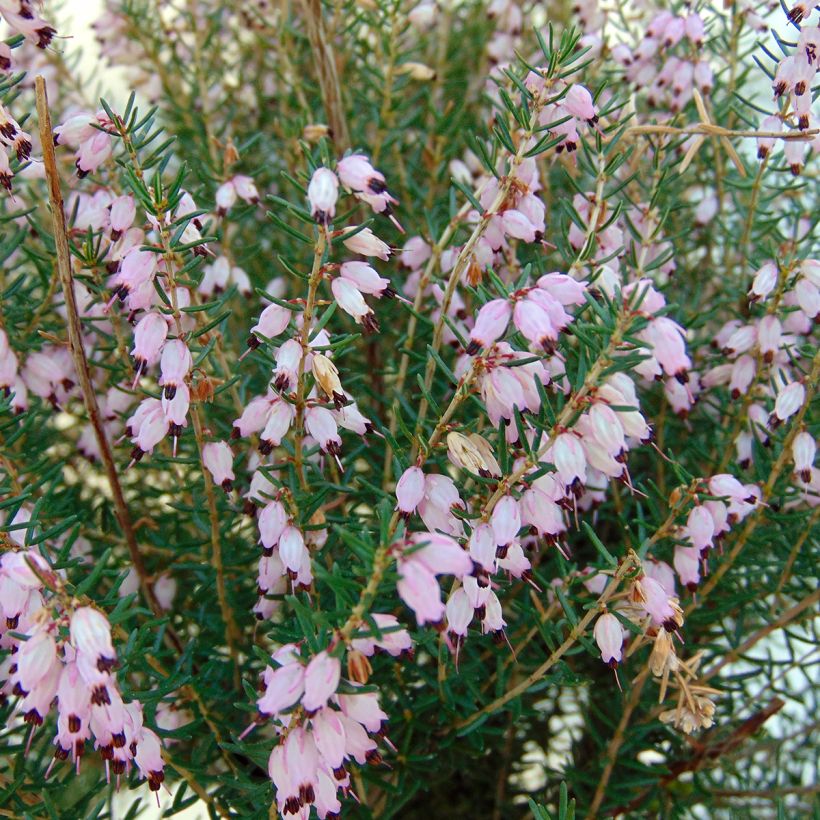

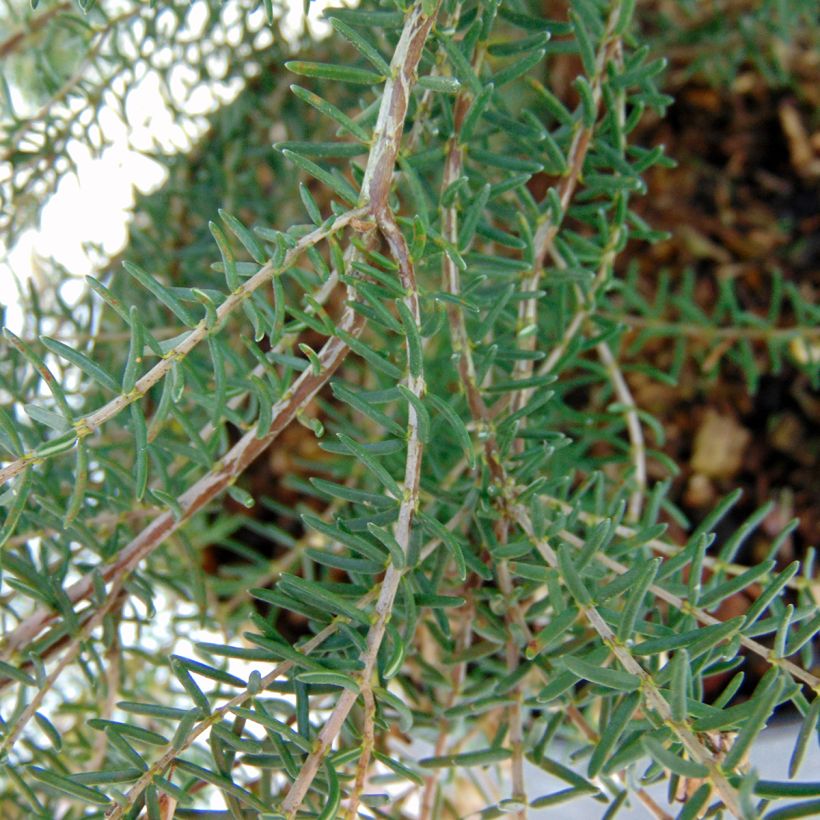

Plant habit
Flowering
Foliage
Botanical data
Erica
mediterranea
Ericaceae
Irish heath
Cultivar or hybrid
Other Heather
View all →Planting and care
Plant early in spring or early in autumn in regions that are not too cold. It enjoys full sun in less sunny regions, but prefers partial shade or morning sun in sunnier climates. It can grow in any well-drained soil, even slightly chalky. Its hardiness is around -12° C (10.4° F) for short periods when well-established. Protect young plants during the first two winters in case of severe cold.
Once well-established, it can withstand anything, but its planting must be careful and watering should be followed during the first two years: if the root ball dries out while the root system is still underdeveloped, the plant will die. Conversely, waterlogged soil, especially in hot weather, can promote the development of a fungus called Phytophthora which, once established, will overcome this heather. During planting, it is advisable to loosen the root ball a little, cut off any overly long roots, and plant in a hole measuring 30x30 cm (11.8x11.8 in), filled with a mixture of coarse sand, ericaceous soil, and garden soil. Water it once or twice a week depending on the ambient temperature, to keep the soil moist while the plant establishes itself. To maintain a compact habit and increase the lifespan of the heather, it is useful, every year after flowering, to prune the faded branches to 2 cm to 5 cm (0.8 in to 2 in) from the previous year's growth, ensuring never to prune below the last green leaves. Erica can also be susceptible to Phytophthora and Rhizoctonia during hot and humid periods. Fertiliser is not necessary, and it is even discouraged to avoid favouring foliage production over flowering (heathers are generally plants of poor soils).
Planting period
Intended location
Care
Planting & care advice
-
, onOrder confirmed
Reply from on Promesse de fleurs
Similar products
Haven't found what you were looking for?
Hardiness is the lowest winter temperature a plant can endure without suffering serious damage or even dying. However, hardiness is affected by location (a sheltered area, such as a patio), protection (winter cover) and soil type (hardiness is improved by well-drained soil).

Photo Sharing Terms & Conditions
In order to encourage gardeners to interact and share their experiences, Promesse de fleurs offers various media enabling content to be uploaded onto its Site - in particular via the ‘Photo sharing’ module.
The User agrees to refrain from:
- Posting any content that is illegal, prejudicial, insulting, racist, inciteful to hatred, revisionist, contrary to public decency, that infringes on privacy or on the privacy rights of third parties, in particular the publicity rights of persons and goods, intellectual property rights, or the right to privacy.
- Submitting content on behalf of a third party;
- Impersonate the identity of a third party and/or publish any personal information about a third party;
In general, the User undertakes to refrain from any unethical behaviour.
All Content (in particular text, comments, files, images, photos, videos, creative works, etc.), which may be subject to property or intellectual property rights, image or other private rights, shall remain the property of the User, subject to the limited rights granted by the terms of the licence granted by Promesse de fleurs as stated below. Users are at liberty to publish or not to publish such Content on the Site, notably via the ‘Photo Sharing’ facility, and accept that this Content shall be made public and freely accessible, notably on the Internet.
Users further acknowledge, undertake to have ,and guarantee that they hold all necessary rights and permissions to publish such material on the Site, in particular with regard to the legislation in force pertaining to any privacy, property, intellectual property, image, or contractual rights, or rights of any other nature. By publishing such Content on the Site, Users acknowledge accepting full liability as publishers of the Content within the meaning of the law, and grant Promesse de fleurs, free of charge, an inclusive, worldwide licence for the said Content for the entire duration of its publication, including all reproduction, representation, up/downloading, displaying, performing, transmission, and storage rights.
Users also grant permission for their name to be linked to the Content and accept that this link may not always be made available.
By engaging in posting material, Users consent to their Content becoming automatically accessible on the Internet, in particular on other sites and/or blogs and/or web pages of the Promesse de fleurs site, including in particular social pages and the Promesse de fleurs catalogue.
Users may secure the removal of entrusted content free of charge by issuing a simple request via our contact form.
The flowering period indicated on our website applies to countries and regions located in USDA zone 8 (France, the United Kingdom, Ireland, the Netherlands, etc.)
It will vary according to where you live:
- In zones 9 to 10 (Italy, Spain, Greece, etc.), flowering will occur about 2 to 4 weeks earlier.
- In zones 6 to 7 (Germany, Poland, Slovenia, and lower mountainous regions), flowering will be delayed by 2 to 3 weeks.
- In zone 5 (Central Europe, Scandinavia), blooming will be delayed by 3 to 5 weeks.
In temperate climates, pruning of spring-flowering shrubs (forsythia, spireas, etc.) should be done just after flowering.
Pruning of summer-flowering shrubs (Indian Lilac, Perovskia, etc.) can be done in winter or spring.
In cold regions as well as with frost-sensitive plants, avoid pruning too early when severe frosts may still occur.
The planting period indicated on our website applies to countries and regions located in USDA zone 8 (France, United Kingdom, Ireland, Netherlands).
It will vary according to where you live:
- In Mediterranean zones (Marseille, Madrid, Milan, etc.), autumn and winter are the best planting periods.
- In continental zones (Strasbourg, Munich, Vienna, etc.), delay planting by 2 to 3 weeks in spring and bring it forward by 2 to 4 weeks in autumn.
- In mountainous regions (the Alps, Pyrenees, Carpathians, etc.), it is best to plant in late spring (May-June) or late summer (August-September).
The harvesting period indicated on our website applies to countries and regions in USDA zone 8 (France, England, Ireland, the Netherlands).
In colder areas (Scandinavia, Poland, Austria...) fruit and vegetable harvests are likely to be delayed by 3-4 weeks.
In warmer areas (Italy, Spain, Greece, etc.), harvesting will probably take place earlier, depending on weather conditions.
The sowing periods indicated on our website apply to countries and regions within USDA Zone 8 (France, UK, Ireland, Netherlands).
In colder areas (Scandinavia, Poland, Austria...), delay any outdoor sowing by 3-4 weeks, or sow under glass.
In warmer climes (Italy, Spain, Greece, etc.), bring outdoor sowing forward by a few weeks.






























